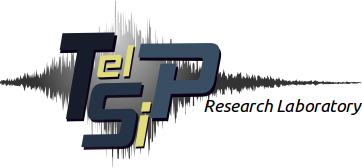Brief description of the purpose and objectives of the Research Laboratory
Research Groups
The Telecommunications, Signal Processing and Intelligent Systems Research Laboratory (TelSiP) was established on April 3, 2015 (Official Government Gazette 515/B/03-04-2015) and re-established on March 1, 2019 (Official Government Gazette 695/Β/01-03-2019) under the Greek Law. This Research Laboratory consists of the following 3 Research Groups:
Telecommunications

Group 1: Design and Development of Electronics, Embedded, Telecommunication Systems and RF Applications
Research Topics:
- Design of electronic systems, telecommunication electronics and high frequency (RF) electronics.
- Design and development of wideband communication systems.
- Design of optical communication systems and development of radio over fiber systems.
- Design of embedded systems using microcontrollers (μC), digital signal processors (DSPs) and FPGAs.
- System-level model development for telecommunication standards.
- Specialized measurements for contemporary telecommunication network.
- Infrastructure development for remote laboratory education.
- Development of microwave subsystems, antennas and RFIDs.
- Algorithm design and analysis for telecommunication networks and systems.
- Stochastic modeling and simulation of communication systems.
- Network applications development.
Signal Processing

Group 2: Signal and Image Processing
Research Topics:
- Digital signal processing.
- Detection and estimation theory.
- Adaptive algorithms.
- Image processing and computational vision algorithms.
- Speech processing.
- Biometric signal and image analysis.
- Forensic analysis based on biometric features.
- Pattern recognition and applications.
- Data compression.
- Image and video compression and international standards.
- Data and information fusion.
Intelligent Systems

Group 3: Computational Intelligence and Informatics
Research Topics:
- Computational intelligence (neural networks, fuzzy logic, evolutionary algorithms).
- Machine learning.
- Intelligent control.
- Design of modern computational systems.
- Cloud computing.
- Internet of Things.
- Optimization.
- Mathematical modeling and system simulation.
